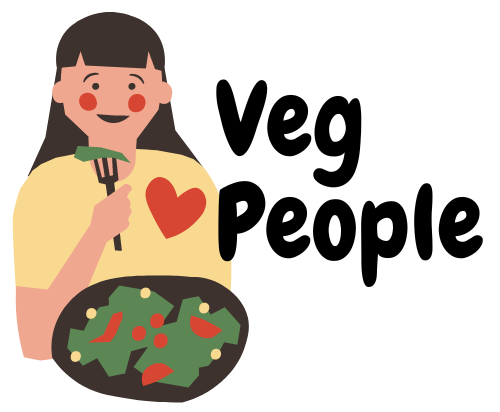
Children and adolescents should eat properly every day, not only to ensure that they grow and develop to their full potential but also to ward off a wide variety of diseases. 1,2 According to the Dietary Guidelines for Americans, 2020–2025, individuals who are 2 years of age or older are encouraged to develop a balanced eating pattern with nutrition facts for kids that incorporates the following components:
- a diverse selection of fruits and veggies as well as processed foods.
- foods made from healthy grains and dairy products with minimal or no fat.
- foods high in protein in a variety of forms
- Oils.
Healthy eating behaviors
Imagine that your body is a luxury sports car that you’ve just purchased. Would you be able to tell me the kind of gasoline that you would put in it? Would you, if you were forced to, give it the best possible fuel that you could locate? Your body may be compared to a high-performance car in a number of different ways. A healthy diet consisting of healthy foods should be followed on a regular basis in order to supply the fuel essential for growth and pleasure. You become unwell far less often as a result. You grow, eat healthy, and develop into a strong and capable individual. Your body’s efficiency will decrease if you consume unhealthy food and drinks. It is probable that you will have reduced stamina and an increase in the number of diseases that you experience.
Information about the Essential Nutrients for Children Along with Interesting Facts
- Minerals are necessary for the growth of healthy skin, teeth, and bones, and they are crucial in their development.
- The digestive system may benefit from eating foods that are rich in fiber and low fat dairy products. Greens, grains, and fruit are all good sources of it in the diet.
- Vitamins play an important role in the body’s ability to prevent sickness and keep itself in good health. The most important dietary sources of vitamins are fresh fruits and vegetables.
- Fats found in dairy products, red meat, fish and other foods all contribute to the development of robust immune systems and neurons in the body.
- Meat, milk, beans, and fish are all excellent sources of protein, which is necessary for the development of muscle and the maintenance and repair of tissue.
Words Related to Eating in a Healthy Manner
- Energy-giving compounds; fuel. There are many different kinds of fuels, and one of them is gasoline.
- Power of the body to do physical activity; energy.
- Dissect and put into practice; ingest
- Healthy foods such as milk, yogurt, and cheese are all examples of foods that are derived from milk.
- Restore; repair
What To Add to Your Kid’s Food Regime?
- Fruits are highly recommended as part of a healthy diet for children. Instead of offering your child fruit juice, you should attempt to encourage them to eat a broad variety of fruits in all the numerous forms in which they are available. It is imperative that you limit your child’s intake of juice to just 100 percent juice that does not include any added sugars. Choose canned fruit that has been labeled as “light” or “packed in its own juice,” since these descriptions suggest that there is little to no added sugar in the product. Always keep in mind that the volume of one cup of fresh fruit is equivalent to a quarter cup of dried fruit. When consumed in significant numbers, dried fruits may contribute calories to the diet.
- Vegetables. It is important to provide vegetables in all of their many forms, including fresh, canned, frozen, and dried varieties into healthy meals. Every week, you should make an effort to supply a diverse array of vegetables, including dark green, scarlet, and orange varieties, beans and peas, starchy selections, and other possibilities. When shopping for canned or frozen vegetables, be sure to look for those that are low in salt.
- Grains. Eat more meals made with whole grains, such as bread made with whole wheat, oats, popcorn, quinoa, brown rice, and wild rice. Reduce your consumption of foods that are heavy in refined carbs, such as white bread, pasta, and rice. These items should be consumed less often.
- Dairy. You should urge your kid to eat milk, yogurt, cheese, and fortified soy drinks on a regular basis since they are all nutritious options that should be included in his or her diet.
The Problem of Obesity in Children Is a Real One

- In order to lower your child’s calorie consumption, you should concentrate on minimizing the following ingredients: sugary drinks and those with added sugar. Keep your sugar consumption to a minimal. Sugars that do not occur naturally in foods, such as those found in milk and fruit, are not regarded to be added sugars. Added sugars include, but are not limited to, brown sugar, corn sweetener, corn syrup, honey, and other varieties of sweeteners. Learn how to read the labels on food. Get your fill of cereal in the morning while consuming less calories and less sugar. Avoid drinking sugary beverages such as soda and energy drinks at all costs.
- Those unhealthy fats, include saturated and trans varieties. Consumption of saturated fats, which are mostly found in animal products such as red meat, poultry, and dairy products with full fat and saturated fat, should be kept to a minimum whenever possible. Instead of include saturated fats in your diet, you may want to think about substituting vegetable or nut oils, which are abundant in beneficial unsaturated fats and vitamin E. Shellfish, olives, almonds, and avocados are all sources of naturally occurring fats that are beneficial for you. Avoid meals made with partially hydrogenated oil in order to reduce your intake of harmful trans fats.
- Sodium. The diets of the great majority of children and adolescents in the United States include an excessive amount of salt. Instead of promoting processed meals such as chips and cookies as healthy snacking alternatives, we should be promoting fruits and vegetables as such options. Read the labels to find products that have a lower salt content.
If you have any questions or concerns about the food that your kid eats, you should discuss them with either the pediatrician who treats your child or a registered dietitian.

